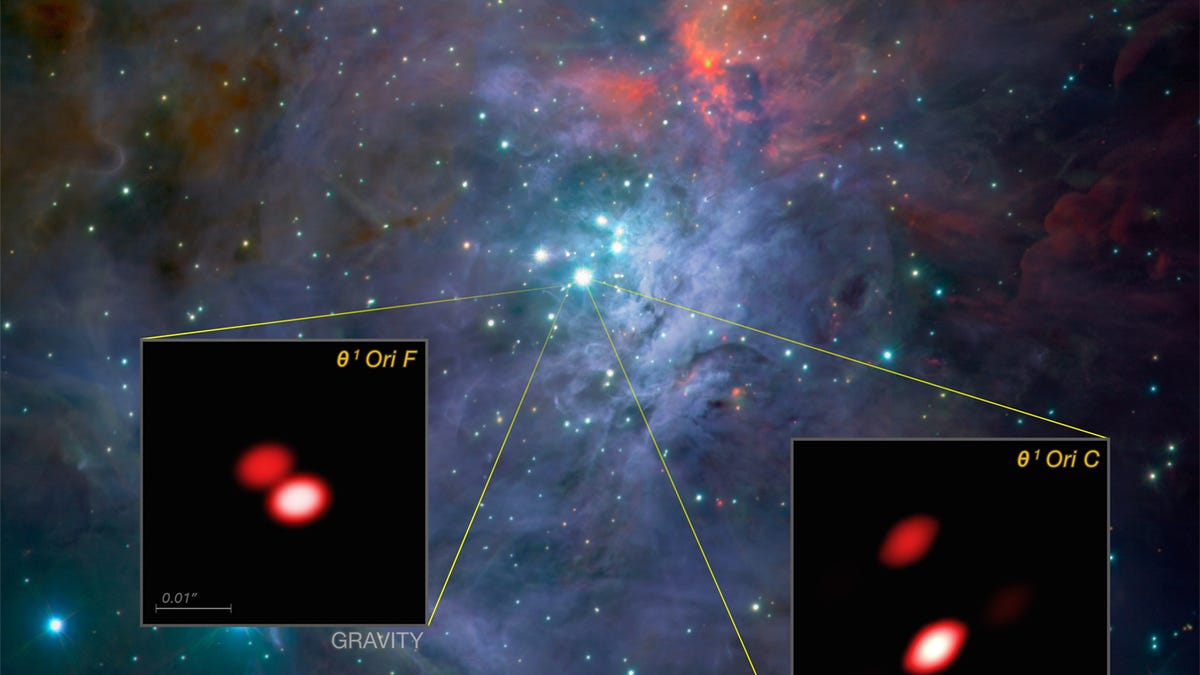VLT black-hole instrument discovers new binary star
The Very Large Telescope's black-hole instrument has been activated, and has already made a stellar discovery.
In the years ahead, astronomical research around the world is going to home in on one of the universe's deepest mysteries. While we know that black holes exist, and have some pretty solid hypotheses for what they are and what causes them, what happens beyond that event horizon is utterly unknown.
The European Southern Observatory is one organisation making an effort to find out. At the Very Large Telescope at the Paranal Observatory in Chile, a special instrument for studying black holes has been activated.
Called Gravity, the instrument combines the light from four of the array's telescopes to create one giant "virtual" telescope up to 200 metres across to find objects that are far too detailed for a smaller telescope. This process is called interferometry, and it is commonly used for examining very bright objects, such as binary stars, at a higher resolution.
On its maiden survey, Gravity successfully combined starlight from the VLT's four Auxiliary Telescopes, pointed at a region of the sky in the Orion nebula, to identify a previously unknown binary star.
"For the first time in the history of long baseline interferometry in optical astronomy, Gravity could make exposures of several minutes, more than a hundred times longer than previously possible," said Frank Eisenhauer of the Max Planck Institute for Extraterrestrial Physics, who led an international team of astronomers and engineers in installing the instrument.
The binary star was found in the nebula's star-forming region, in a small group of bright, young stars called the Trapezium Cluster. The Gravity instrument was able to focus on the cluster using a reference star to stay locked on for periods of several minutes at a time, achieving the feat of stabilising all four telescopes simultaneously. This allowed the deep exposure on the object, resolving it into two separate stars.
In addition to its ability to provide higher levels of detail, the instrument is also very accurate at measuring distances, and can perform spectroscopy. This will help Gravity study binary stars, exoplanets and stellar accretion discs.
However, its primary mission will be studying black holes. Like the Event HorizonTelescope, which will be returning its first images in 2017, Gravity will be concerting its efforts on the region around the event horizon of the black hole at the centre of the Milky Way galaxy, Sagittarius A*. This is region is a strong gravitational field, and the observations will either comply with or disprove Einstein's General Theory of Relativity.
The instrument will also be used to examine the jets and accretion discs of both Sagittarius A* and other black holes, as well as very young stars.


